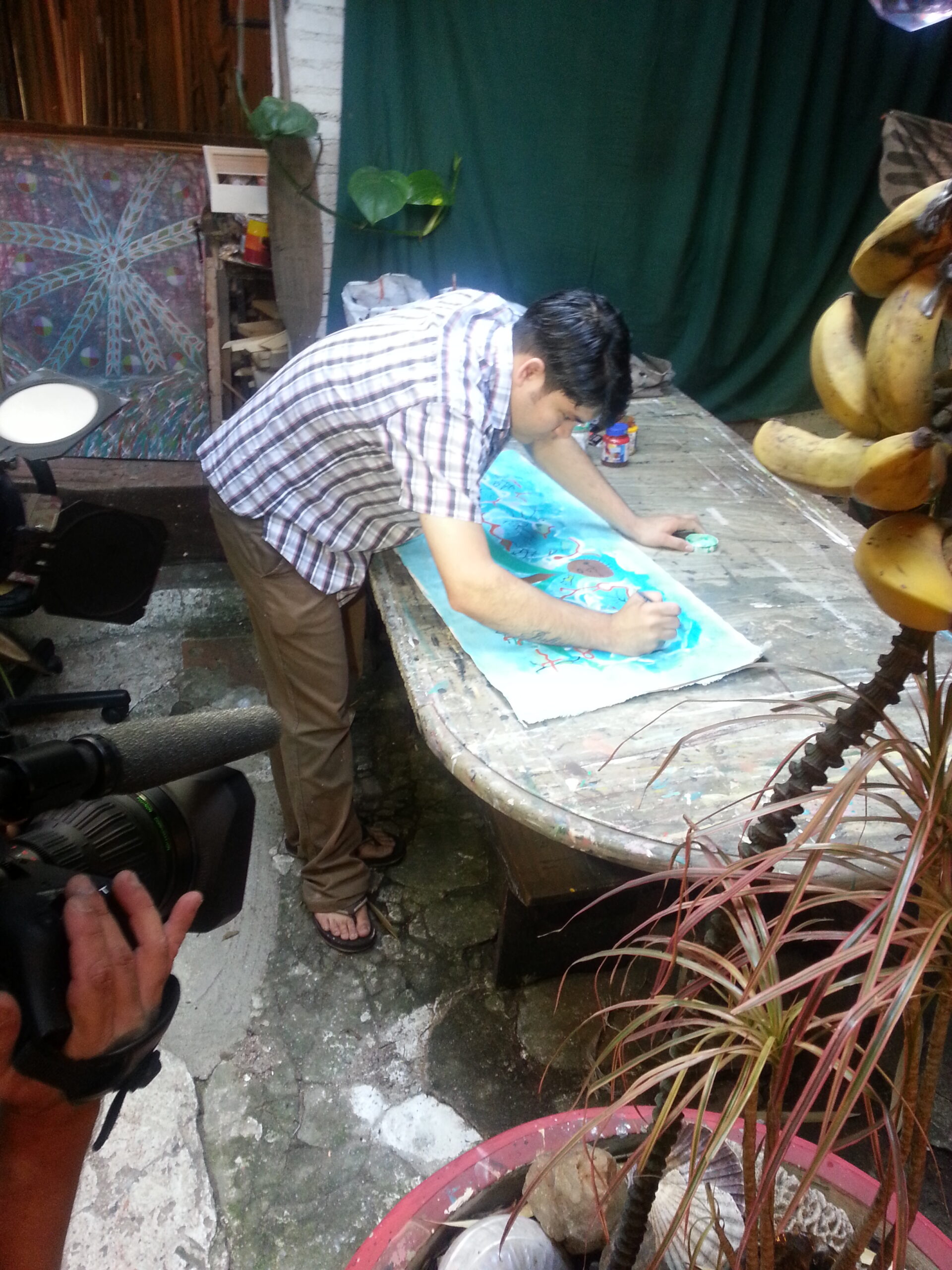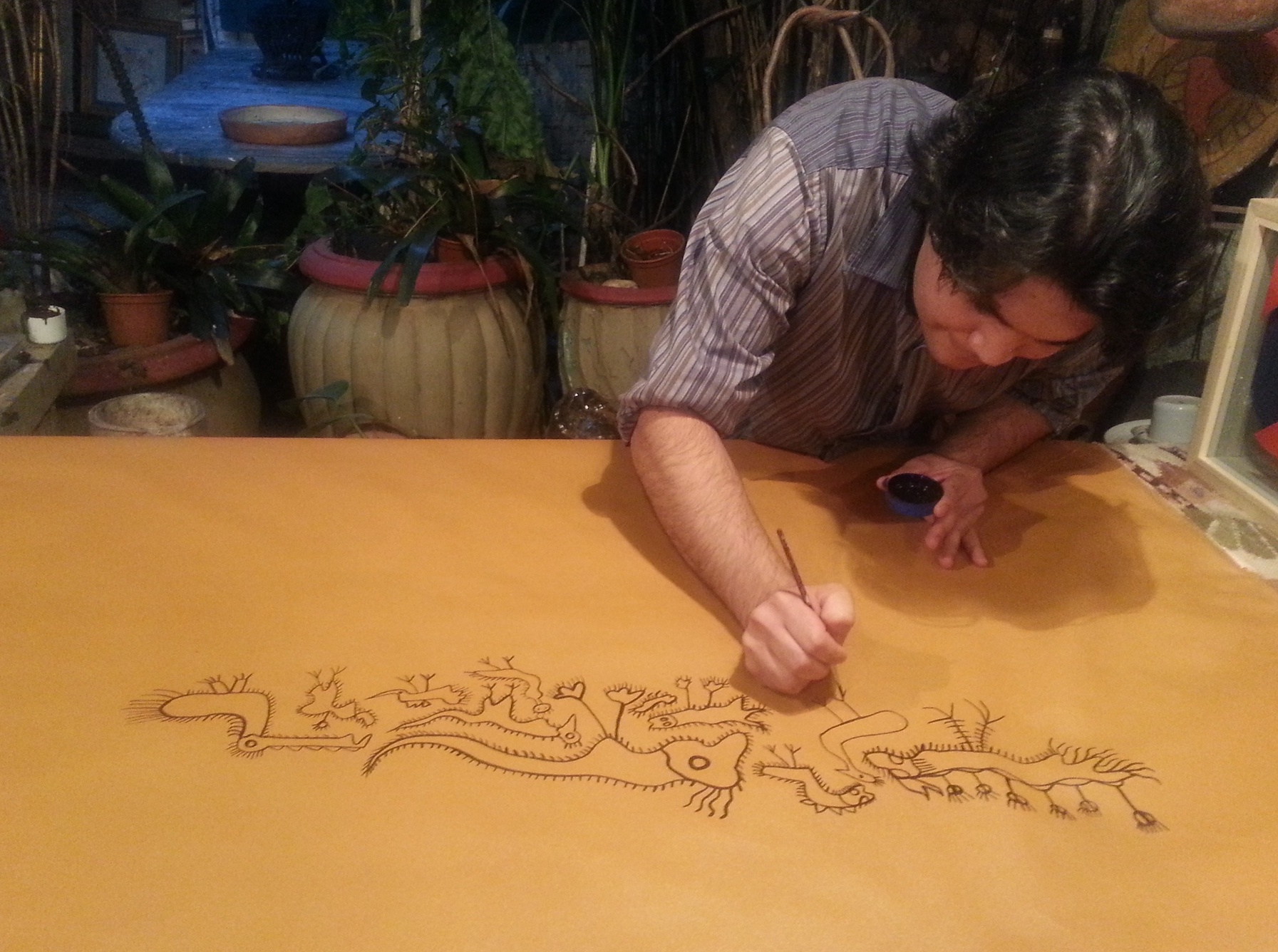One of the stepbrothers, who works as a valet parking in a luxurious São Paulo neighbourhood convinces him to take on the same job. During his time as a parking attendant on Oscar Freire street, an artist who has been working on that street for 30 years notices him.
This is Tonico Mendonça, who sees him and invites him to work with him in his frame workshop. Branco thus begins his first contact with the canvases. In moments of little work, he wants to go back to the street but Tonico with intuition keeps him between the brushes.
Tonico immediately noticed the boy's immense pleasure when he paints, his agility with the brush denotes an irrepressible desire to express himself through images, drawings and symbols. A kind of personal and unique handwriting.
Tonico's home soon becomes his and in the same space between the shop and the house, a corner with an old table becomes his atelier. It was in 2009 when Branco painted the first canvas.


